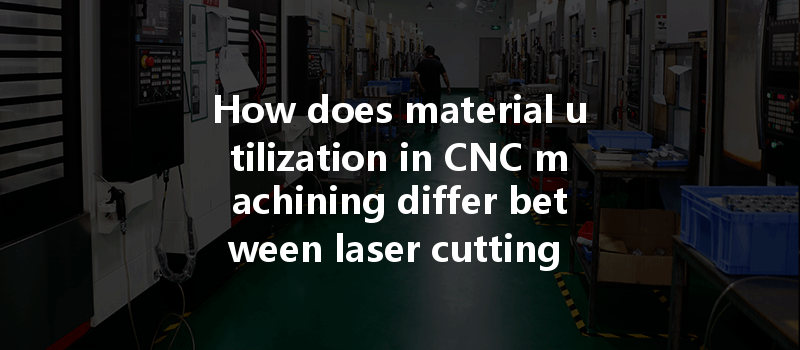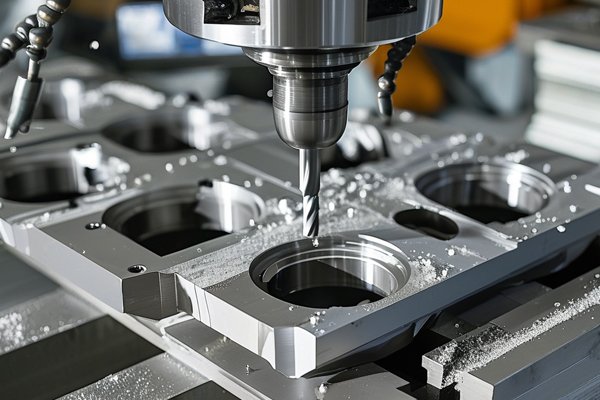Did you know that approximately 25-30% of raw materials are typically wasted during the manufacturing process in machining? This staggering statistic highlights the importance of efficient material utilization in CNC machining, particularly when comparing processes like laser cutting and water jet cutting. As manufacturers strive to optimize their operations, understanding the differences in material utilization between these two cutting technologies becomes paramount.
In this comprehensive guide, we will delve into the nuances of laser cutting and water jet cutting, examining their respective advantages, disadvantages, and specific applications. We will also explore how each method impacts material utilization, allowing you to make informed decisions based on your machining needs.
Understanding CNC Machining
What is CNC Machining?
Computer Numerical Control (CNC) machining is a manufacturing process that uses programmed computer software to control machine tools in the production of various workpieces. CNC machines can automate multi-axis machining and improve production accuracy, speed, and efficiency. CNC machining encompasses various techniques like milling, turning, and cutting, with laser cutting and water jet cutting being among the most widely used methods.
Overview of Laser Cutting
Laser cutting involves the use of a high-powered laser beam to melt, burn, or vaporize material. The process is known for its precision and ability to cut through thick and thin materials with minimal kerf. Laser cutting is popular in industries such as automotive, aerospace, and electronics due to its accuracy and speed.
Overview of Water Jet Cutting
On the other hand, water jet cutting utilizes high-pressure water mixed with abrasive particles to cut through materials. This method is highly versatile and can process a wide range of materials, from metals and plastics to glass and ceramics. Water jet cutting is particularly advantageous for materials that are sensitive to high temperatures, as it does not generate heat-affected zones.
Comparing Material Utilization
Material Utilization and Its Importance
Material utilization refers to the effectiveness of using raw materials in a manufacturing process. High material utilization means less waste and lower costs, which are crucial factors for manufacturers to remain competitive. The choice of cutting method significantly impacts material utilization, as different processes leave varying degrees of kerf (the width of the material removed during cutting) and waste.
The Basics of Kerf
Kerf can be defined as the material that is removed during cutting, and it is an essential factor when comparing laser and water jet cutting. A wider kerf means more material is wasted, which can affect the overall cost-effectiveness of the manufacturing process.
Laser Cutting Kerf
Laser cutting typically has a narrower kerf, often ranging from 0.1 mm to 0.5 mm, depending on the power of the laser and the material thickness. This precise cutting ability means that less material is wasted during the cutting process, which translates into lower costs and better material utilization.
Water Jet Cutting Kerf
In contrast, water jet cutting tends to have a wider kerf, generally between 0.7 mm and 1.5 mm. The broader kerf contributes to higher material waste, which can be a concern when working with expensive materials or when precision parts are required.
Efficiency of Material Utilization
Laser Cutting Advantages
Water Jet Cutting Advantages
Case Studies in Material Utilization
Case Study 1: Aerospace Industry
In the aerospace sector, manufacturers often utilize both laser and water jet cutting for different applications. For precision components, laser cutting tends to be favored due to its tight tolerances. The material savings from choosing laser cutting result in reduced costs for both raw materials and excess inventory.
On the other hand, water jet cutting is often employed when working with composite materials that require cutting without generating heat. While water jet cutting might involve a higher kerf, the ability to avoid delamination and preserve the integrity of composite materials can outweigh the drawbacks in material utilization.
Case Study 2: Automotive Industry

In the automotive industry, where efficiency is key, many manufacturers have adopted laser cutting for sheet metal components. The lower kerf and minimal thermal distortion allow for tighter assemblies and lighter vehicles, leading to improved fuel efficiency.
However, for certain components requiring intricate designs in thicker materials, water jet cutting can be utilized as a complementary method. The overall material utilization in this mixed approach enables manufacturers to balance speed, precision, and waste reduction effectively.
Specific Applications of Laser vs. Water Jet Cutting
Understanding which cutting method to choose can greatly impact material utilization and overall production costs. Below, we explore the specific applications for laser and water jet cutting.
Applications for Laser Cutting
Applications for Water Jet Cutting
Cost Implications of Material Utilization
Evaluating Cost-Effectiveness
While both cutting methods have their advantages, it’s important to consider the cost implications associated with material utilization.
Laser Cutting Costs
The speed and precision of laser cutting translate into fewer man-hours in labor and faster turnaround times. The reduced kerf makes it a cost-effective choice, especially when considering high-volume production runs.
Water Jet Cutting Costs
Though water jet cutting may involve a wider kerf and potentially more waste, its capability to handle various materials and thicker sections may justify the operational costs in specific applications. Additionally, it offers operational flexibility that can be appealing in a dynamic production environment.
Improving Material Utilization Strategies
Techniques for Enhanced Material Savings
: The Future of Material Utilization in CNC Machining
As we have explored, the choice between laser cutting and water jet cutting significantly impacts material utilization within CNC machining. While laser cutting tends to offer superior precision and a narrower kerf, water jet cutting provides versatility and the ability to handle diverse materials without introducing thermal damage.
Both methods have their rightful place in the manufacturing landscape, and understanding the specific applications and advantages of each can lead to informed decision-making that aligns with operational goals.
Manufacturers must continuously evaluate their cutting methods, striving for improvements in material utilization to remain competitive in today’s ever-demanding market landscape. Emphasizing smart material choices and effective cutting strategies is essential for minimizing waste, reducing costs, and enhancing the overall performance of the production process.
By taking a closer look at the technologies behind CNC machining and actively seeking ways to enhance material utilization, manufacturers can pave the way for a more sustainable future—one that values efficiency, quality, and economic viability.
In summary, whether you gravitate toward laser or water jet cutting, the choices you make today can have lasting effects on your bottom line tomorrow. Understanding these differences is not just important; it’s an investment in the future of your manufacturing operations.






